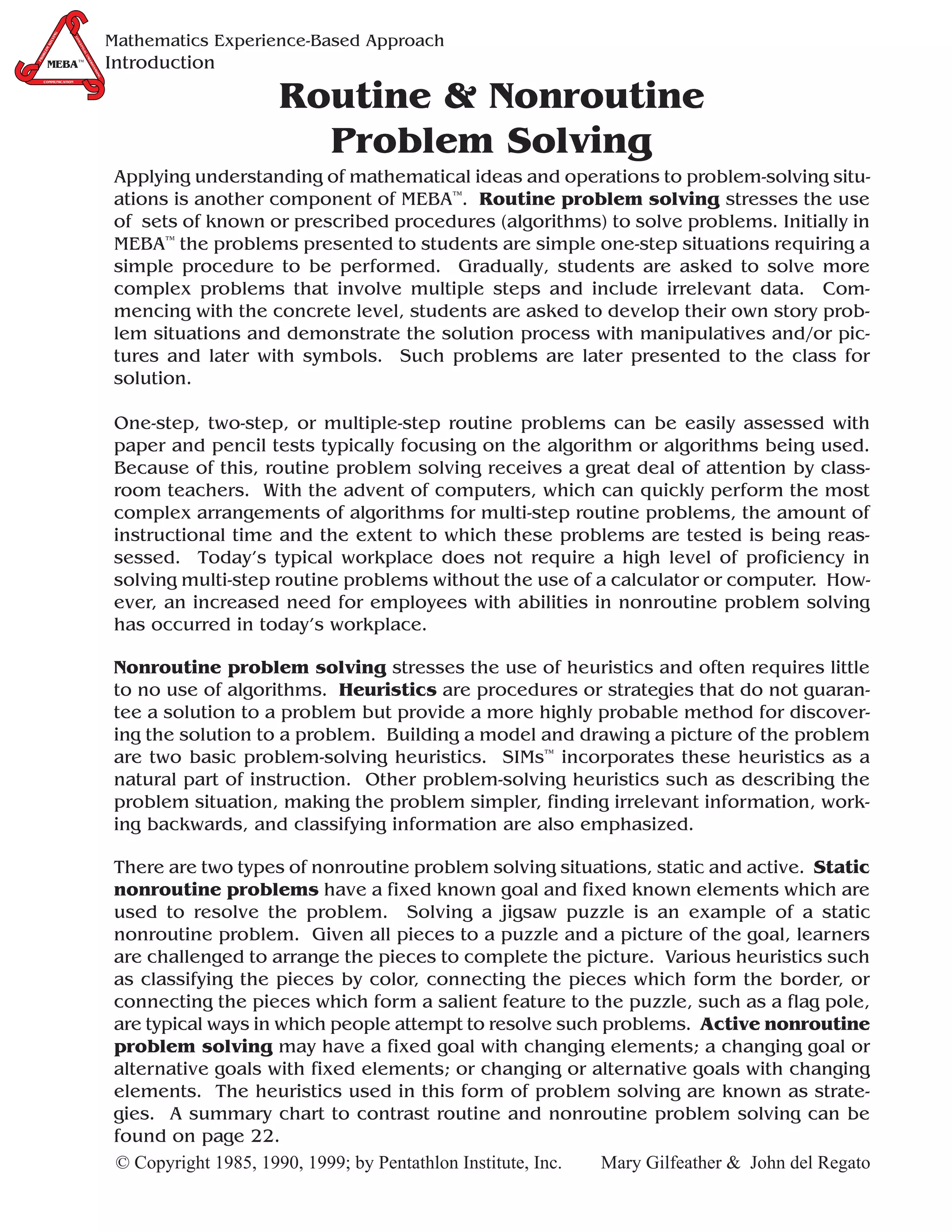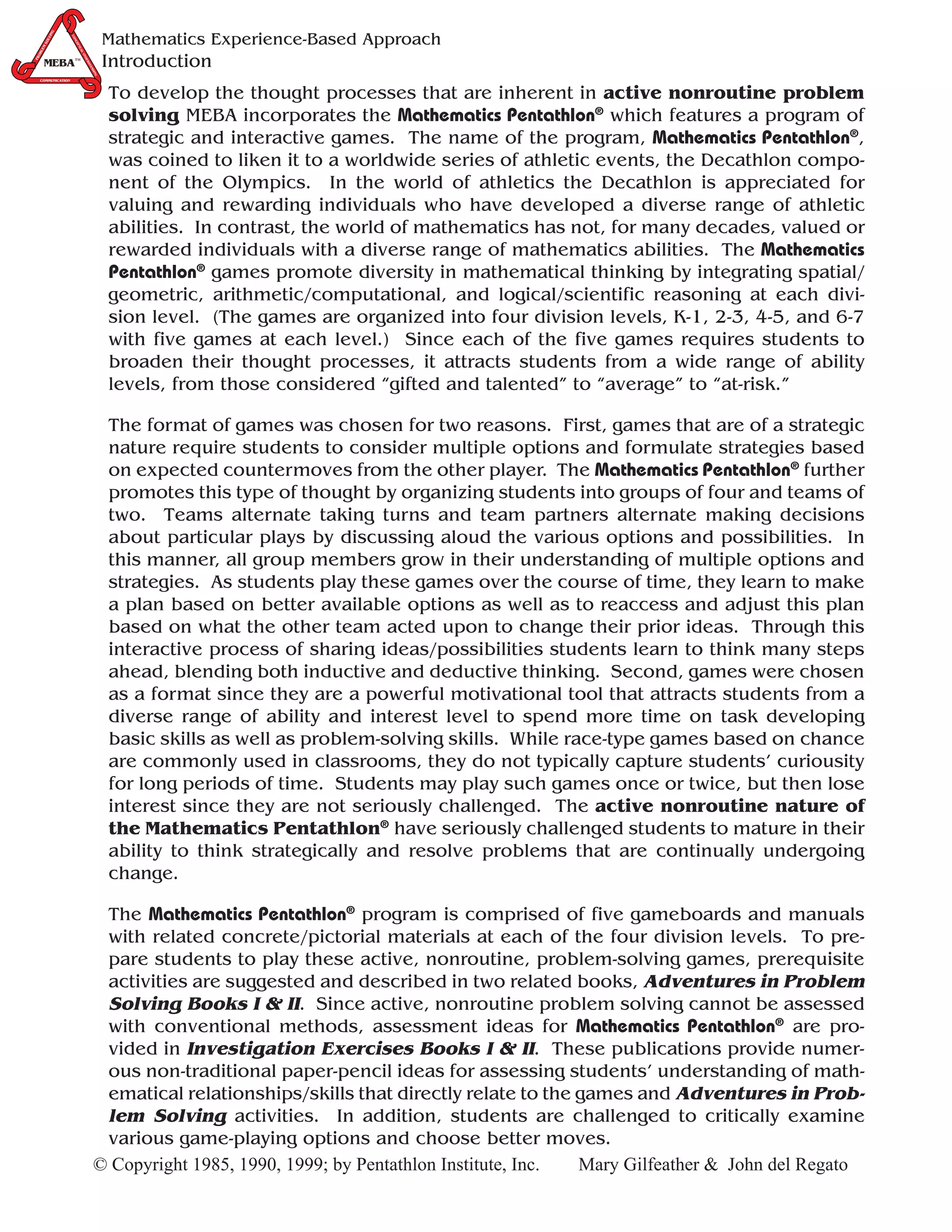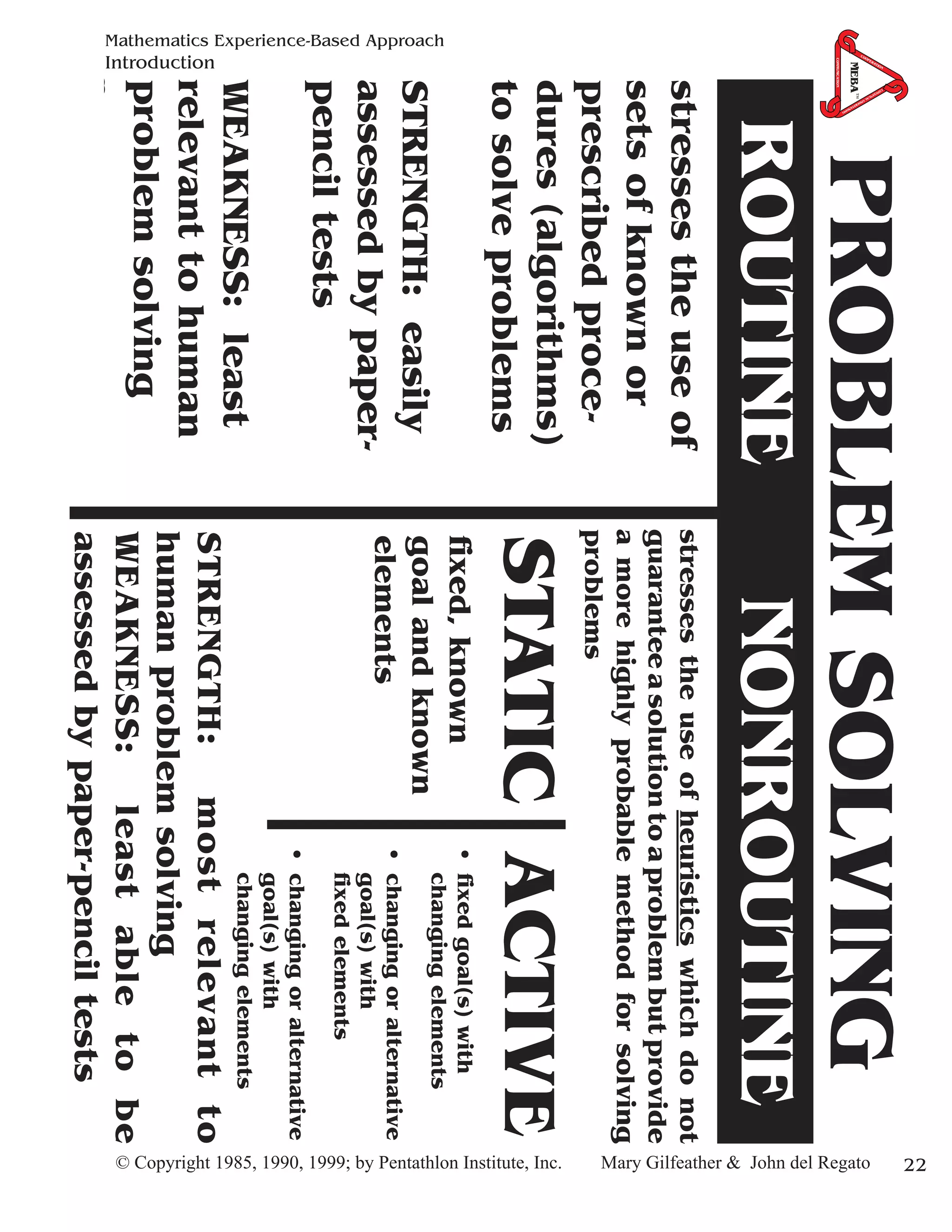This document discusses an experience-based approach to mathematics education called MEBATM. It focuses on both routine and nonroutine problem solving. Routine problems involve known procedures while nonroutine problems emphasize heuristics. The document also introduces the Mathematics Pentathlon® program which features strategic games to develop diverse mathematical thinking and active nonroutine problem solving skills.


